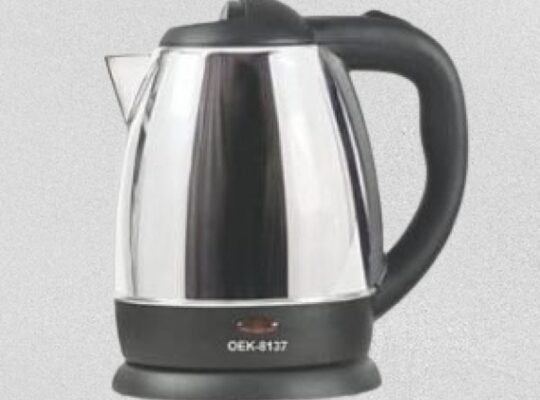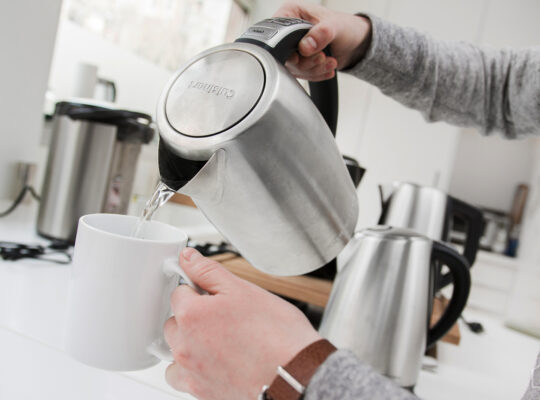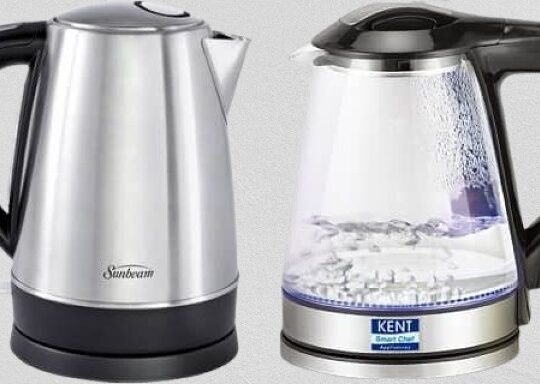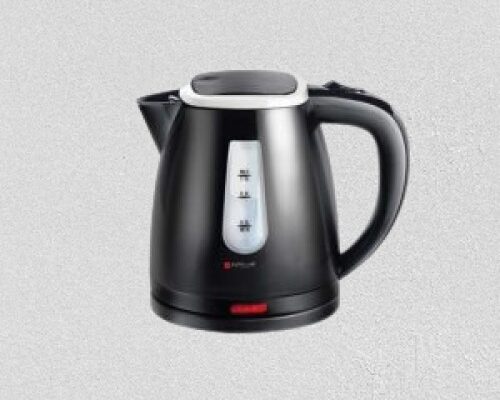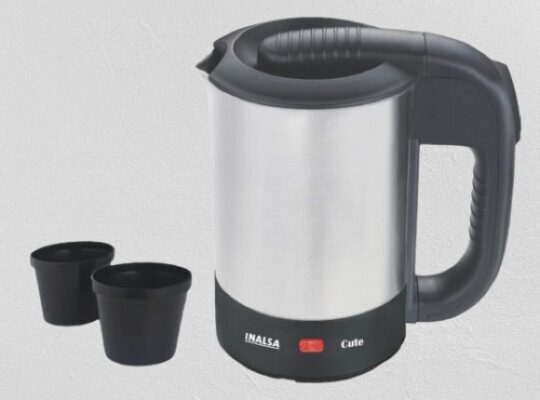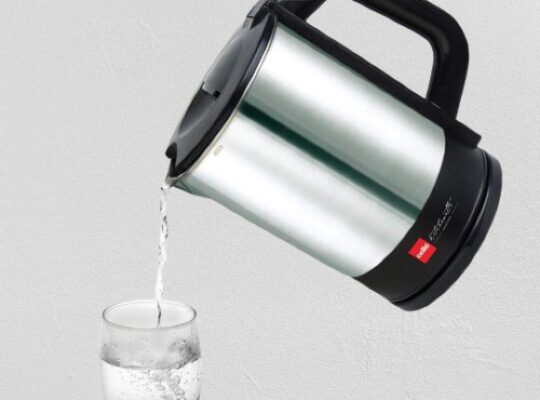Electric kettles are very popular among consumers because they boil water at a much faster rate as compared to conventional stove top kettles. Thus, an electric kettle enables you to swiftly prepare tea, coffee and other hot beverages. Temperature control system is also present in most of the electric kettles which prevents over boiling of water. The electric kettle automatically shuts off when the desired temperature is reached.
Electric kettle needs to be kept spick and span. The common problem in an electric kettle is limescale buildup which slows down the heating process and causes flakes of minerals to get into your tea and coffee. It is better to remove limescale as soon as it starts forming in the kettle before it becomes hard. These are some of the ways using which you can remove limescale buildup in your electric kettle.
Using vinegar solution
Vinegar makes the limescale buildup soft and helps in easy removal. First you need to make of solution of equal parts of water and white vinegar and fill half or three quarters of the electric kettle with it. Now you need to switch on the kettle and allow the solution to boil. Thereafter, remove the plug of the electric kettle from the socket and allow the solution to sit in the kettle for 20-30 minutes. During this time, the solution soaks the limescale buildup and softens it. If the buildup is severe, then you can also increase the vinegar content and boil the solution again and leave the solution for a longer period of time in the kettle.
Now you need to scrub the inside of the electric kettle using non metallic sponge, cloth or a soft brush. Care should be taken to not scrub the heating element of the kettle. Thereafter, rinse the kettle thoroughly with water to remove traces of vinegar. You can also boil water in the kettle and throw it away to completely remove traces of vinegar. Wipe the inside of the kettle with a clean cloth and allow it to dry.
Using baking soda
Baking soda is also an effective option to remove limescale buildup in electric kettles. This method can be used for cleaning those brands of electric kettles for which use of vinegar is prohibited. First you need to mix a teaspoon of baking soda in water and pour the solution into the electric kettle. Now you need to boil the solution in the kettle. Leave the solution in the kettle for 20 minutes to soak the limescale buildup. Thereafter, scrub the inside of the kettle using a sponge or brush with soft bristles. Finally, rinse the kettle thoroughly with cold water and leave it to dry.
Using lemon juice
Lemon juice can also be used if vinegar is prohibited. You need to squeeze lemon juice in water and can also put pieces of lemon in the solution. Put this solution in the kettle and boil it. Leave the solution in the kettle for an hour to soften the buildup. The citric acid present in lime juice acts against the limescale buildup. A soft scrub or brush can be used to wipe the inside of the kettle to eliminate residual traces. Rinse the kettle with water and allow it to dry. To remove the smell of lemon, boil water in the kettle and dump it.
Commercial cleaning solution
Commercial cleaning solutions are also available in the market. Mix the cleaning the product in water as per given directions and boil it in the kettle. Allow the solution to rest in the kettle for some minutes and rinse the kettle after dumping the solution.
How to clean the exterior?
The exterior part of an electric kettle can be cleaned using a dish soap or detergent. The exterior should be wiped with a damp cloth after using detergent or dish soap. The electric kettle cannot be put in water as the heating element can be damaged. In case of stainless steel electric kettle, the exterior can also be polished with olive oil to keep it shiny. You need to put some olive oil on a soft cloth and rub the exterior surface of the kettle slowly.
Important precautions
Depending upon the usage, it is better to remove limescale buildups once every month at least. The exterior should be cleaned once a week at least. Water should not be left in the kettle after use because this promotes the buildup of mineral deposits. Only the required amount of water should be boiled. Even if some water is left, it can be used for plants but should not be left in the kettle. Using distilled water also prevents mineral deposits.
Nowadays, electric kettles with limescale catchers are also available in the market. Purchasing such kettles completely eliminates the need to remove limescale buildup.
